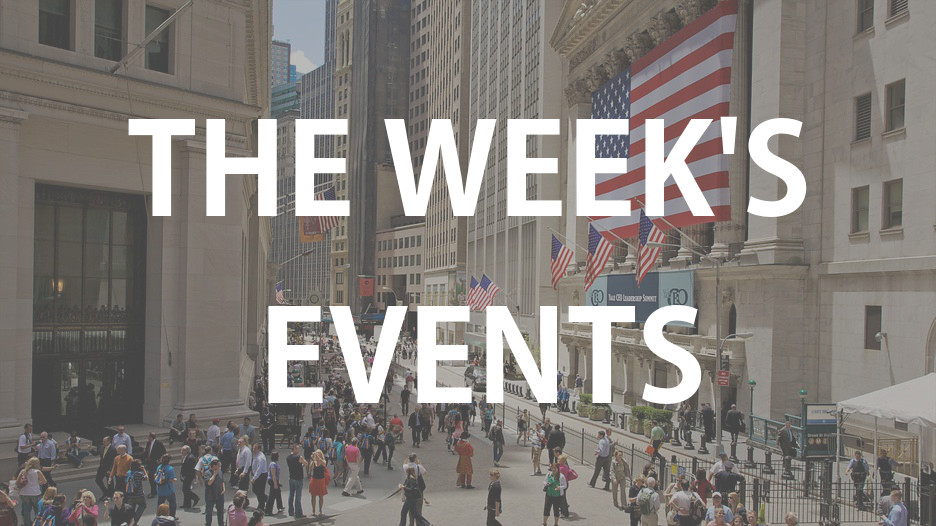
Positives
1)Amazing news from Merck with its antiviral pill cutting the risk of hospitalization or death by 50%.
2)The US September ISM manufacturing index rose 1.2 pts m/o/m to 61.1 and that was a bit better than the estimate of 59.5. Of the 18 industries surveyed, 17 saw growth vs 15 in August and 17 in the two months prior. 17 of 18 industries saw slower supplier deliveries and higher prices. Of 18 industries asked, just 1 said they had too much inventory. The ISM said, “Business Survey Committee panelists reported that their companies and suppliers continue to deal with an unprecedented number of hurdles to meet increasing demand. All segments of the manufacturing economy are impacted by record-long raw materials lead times, continued shortages of critical materials, rising commodities prices and difficulties in transporting products. Global pandemic-related issues — worker absenteeism, short-term shutdowns due to parts shortages, difficulties in filling open positions and overseas supply chain problems — continue to limit manufacturing growth potential. However, optimistic panel sentiment remains strong, with three positive growth comments for every cautious comment. Panelists are fully focused on supply chain issues in order to respond to the ongoing high levels of demand.”
3)Pending home sales in August rose by 8.1% m/o/m, well better than the estimate of up 1.4% and follows a 2% drop in July and one in June. All four regions saw gains m/o/m and the index level itself is back to the highest since January. The NAR is saying this as the reasons, “Rising inventory and moderating price conditions are bringing buyers back to the market.” But, here is the following caveat, “Affordability, however, remains challenging as home price gains are roughly three times wage growth.” The NAR also said that the areas with the best sales are those with more moderately priced homes as “This can be attributed to some employees who have the flexibility to work from anywhere, as they choose to reside in more affordable places.”
4)Core durable goods orders in August rose .5% m/o/m, one tenth more than expected and July was revised up by 2 tenths to a .3% gain. Core shipments, plugged into GDP, rose by .7% m/o/m and just below the pace that inventories were up and the inventory to shipments ratio was up to 1.79 from 1.77 in July and vs 1.79 in June.
5)The final September UoM consumer confidence index was revised to 72.8 from the 1st print of 71 and vs 70.3 but still well below the July level of 81.2. One year inflation expectations were 4.6%, unchanged from August and vs 4.7% in July. The longer term figure rose to 3% from 2.9% and that matches a 10 yr high. Employment and income expectations both improved m/o/m. Spending intentions got better from the preliminary September report a few weeks ago but were still down across the board from August and at multi decade lows.
6)Some PMI’s in Asia: South Korea 52.4 vs 51.2, Malaysia 48.1 vs 43.4, Thailand 48.9 vs 48.3, India 53.7 vs 52.3, Australia 56.8 vs 52, Philippines 50.9 vs 46.4.
7)Japan’s Q3 Tankan report for large manufacturers rose to 18 from 14 and that was 5 pts better than expected. The services side was also a touch better while the overall business outlook was little changed. For smaller companies, both manufacturing and services did rise q/o/q while the outlook was also not much different than Q2.
8)The China services September PMI jumped by 5.7 pts m/o/m to 53.2 and that was well better than the estimate of 49.8. Price pressures increased as well while business activity expectations bounced to 59.1 after last month’s 3.3 pt drop.
9)The private sector Caixin manufacturing index came in right at 50 vs 49.2 in August and vs the 49.5 estimate. Keep in mind that more than 85% of the jobs in China are with private sector companies. Caixin said what’s happening everywhere, “Supply in the manufacturing sector continued to shrink, while demand improved. The resurgence of the epidemic in several regions and shortfalls in raw material supplies slowed production at manufacturing companies, with the gauge for output contracting for the 2nd straight month in September. Demand improved, though marginally, with demand for consumer goods in the doldrums.” Export orders fell and “global shipping capacity was also clearly insufficient.” Employment fell while “inflationary pressure surged.” Overall optimism remains as “Entrepreneurs remained optimistic about the business outlook” as “the gauge for future output expectations bounced back to the long term average. Manufacturing enterprises remained positive about the prospects for the market and for getting the Covid outbreak under control.” There was no commentary on power shortages.
10)The September Eurozone economic confidence index rose a touch to 117.8 from 117.6 but that was better than the estimate of a modest drop to 117. Manufacturing held strong notwithstanding the supply challenges while services fell to a 4 month low as did retail. Consumer confidence though did improve and construction continued to strengthen.
11)Both Germany and France consumer confidence indices improved as life normalizes in those two countries and in the region because of high vaccination rates. The German index from GFK rose to .3 from -1.1 and that is the highest since April 2020. The French one was up 3 pts m/o/m.
Negatives
1)The August PCE inflation figure was up .4% headline and .3% core m/o/m with both one tenth more than expected and the same pace of gain seen in July. Versus last year, headline inflation was up 4.3% y/o/y and by 3.6% at the core level. Goods prices rose by 5.5% y/o/y and services by 3.6%. Food prices were up by 2.8% y/o/y and by 25% for energy.
2)Compare that .4% headline inflation print with a .2% rise in income (as expected) which equates to a decline in REAL income. But there is hope as private sector wages/salaries saw a .5% m/o/m increase. Spending was up by .8% m/o/m, one tenth more than expected but completely offset and then some by the 4 tenths downward revision to July. Thus, ALL of the nominal spending increase in July and August was driven by inflation. Combining the two puts the savings rate at 9.4% vs 10.1% in July.
3)From the October Apartment List National Report: “Our national index increased by 2.1 percent from August to September. Although month-over-month growth has slowed slightly from its July peak, rents are still growing much faster than the pre-pandemic trend. Since January of this year, the national median rent has increased by a staggering 16.4 percent. To put that in context, rent growth from January to September averaged just 3.4 percent in the pre-pandemic years from 2017-2019…While any cooldown in rent growth is a welcome change for renters, it’s important to bear in mind that prior to this year, our national index never increased by more than .9% in a single month, going back to 2017.”
4)Home buyers in July paid 20% more for homes vs July 2020 according to S&P CoreLogic’s home price index. This is a rate of gain never before seen. Leading the way, home prices in Phoenix spiked 32% in July and by 28% in San Diego. On the slower end, they rose ‘just’ 13% in Chicago and by 14.5% in Minneapolis.
5)With the rise in the 10 yr, the average 30 yr mortgage rate rose 7 bps w/o/w to 3.10%. It still of course is very low but is at the highest since mid July. Both purchases and refi’s were lower from last week, the former by 1.2% and the latter by .9%.
6)Initial claims came in at 362k which was above the estimate of 330k and up from 351k last week. Continuing claims, delayed by a week in its reporting, fell by 18k to 2.8mm and was just above the consensus. The pandemic assistance programs are winding down.
7)The Conference Board’s consumer confidence index fell to 109.3 in September from 115.2 in August with both main components down m/o/m. This compares with a print of 132.6 in February 2020. One yr inflation expectations moderated by 2 tenths to 6.5% off a 10 yr high but that’s just back to the 6 month average and which is vs the 5 yr average of 5.1%. With respect to the answers to the jobs market questions, those that said jobs were Plentiful rose to the highest level since 2000 but there was also a rise in those that said jobs were Hard to Get. I can only square that circle as a skills mismatch issue. On the expectations for jobs, employment and income both moderated. There were further declines in spending intentions for auto’s, homes and major appliances.
8)Eurozone CPI for September rose .5% m/o/m and 3.4% y/o/y as expected. Taking out the influence of energy and food to that topline, the core rate was up by 1.9% y/o/y. That core rise matches the fastest since March 2008. Services inflation quickened to a 1.7% y/o/y gain while non energy industrial goods prices rose by 2.1% y/o/y.
9)The Eurozone September manufacturing PMI was left almost unrevised at 58.6 vs the 1st print of 58.7 but that is still down from 61.4 in August “as producers report a growing toll from supply chain headwinds” according to Markit. They went on to say “Supply issues continue to wreck havoc across large swathes of European manufacturing, with delays and shortages being reported at rates not witnessed in almost a quarter of a century and showing no signs of any imminent improvement. Growing supply and transport issues are not only being cited as a major constraint on both production and demand, but also once again drove prices sharply higher in September.”
10)Germany also said that the number of unemployed fell by 30k in September but that wasn’t as much as the estimate of a decline of 37k. Their unemployment rate held at 5.5% which is the lowest since March 2020 when it printed 5% right before everything changed.
11)German import prices in August rose another 1.4% m/o/m and by 16.5% y/o/y. Year to date they are up an astonishing 20.6% annualized.
12)Some PMI’s in Asia: Taiwan 54.7 vs 58.5, Vietnam 40.2 vs 40.2, and Japan 51.5 vs 52.7.
13)The state focused China manufacturing PMI dipped below 50 at 49.6 from 50.1 and vs the estimate of exactly 50. Both input and output prices rose to 4 month highs but most everything else was below 50. The expectations component was 56.4 vs 57.5 and that is a multi month low. I don’t know how much of this captured the power driven shutdowns.
14)Buffalo Bills 2-1
Miami Dolphins 1-2
New England Patriots 1-2
New York Jets 0-3
 Peter is the Chief Investment Officer at Bleakley Advisory Group and is a CNBC contributor. Each day The Boock Report provides summaries and commentary on the macro data and news that matter, with analysis of what it all means and how it fits together.
Peter is the Chief Investment Officer at Bleakley Advisory Group and is a CNBC contributor. Each day The Boock Report provides summaries and commentary on the macro data and news that matter, with analysis of what it all means and how it fits together.